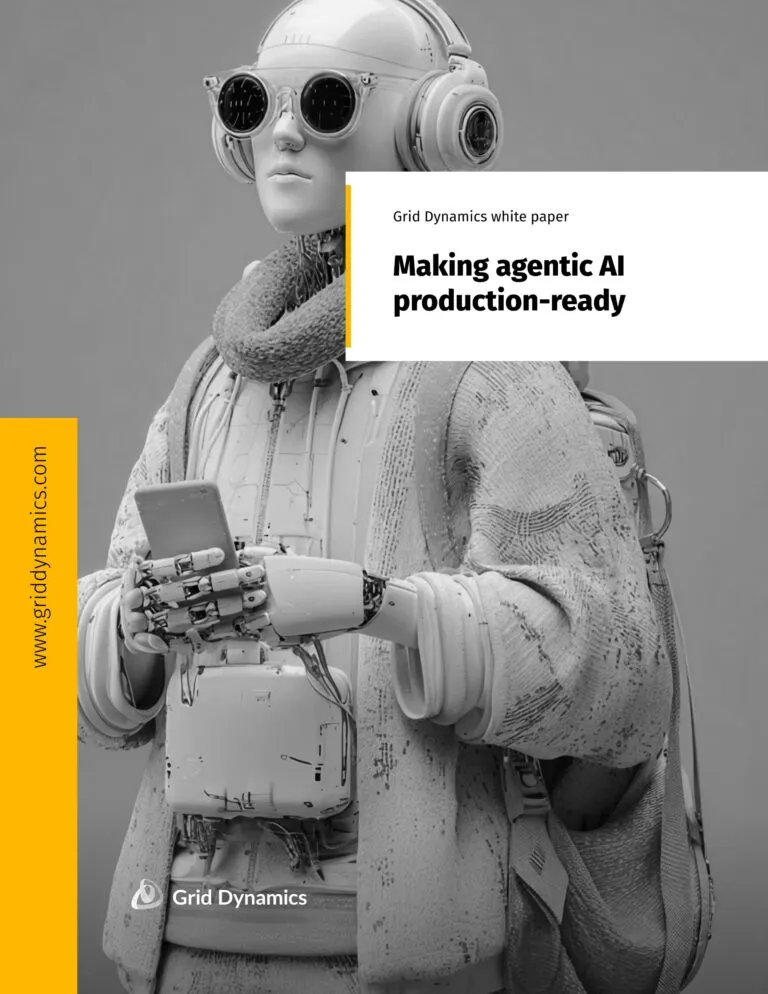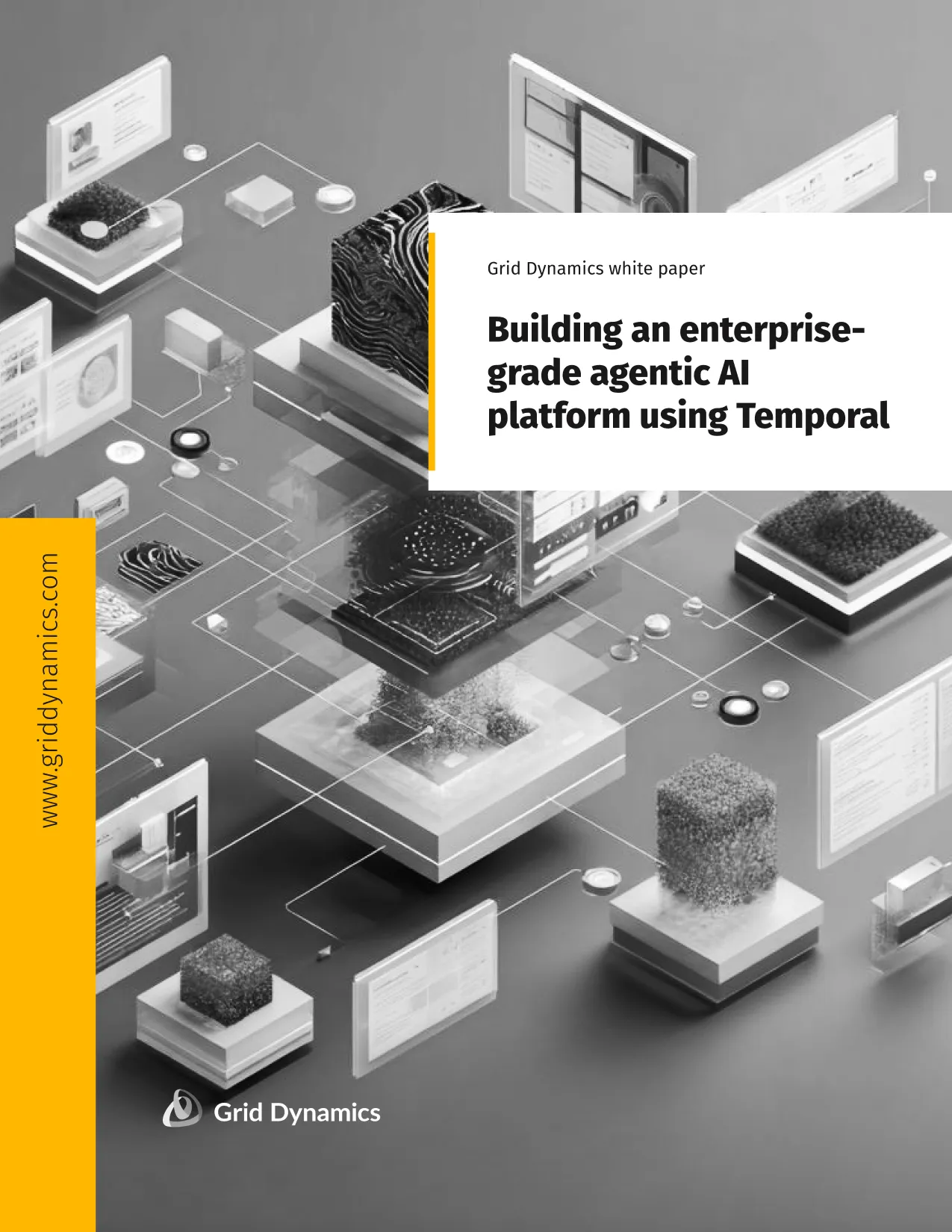Get the White Paper
CTO insights: DeepSeek

Is DeepSeek AI development the right choice for your organization? Download the full white paper to get your hands on comprehensive technical details, in-depth performance benchmarks, and actionable insights from CTOs—for CTOs (and AI innovators).
Executive summary
DeepSeek has quickly established itself as a force to be reckoned with in AI development, proving its mettle in model performance through engineering strategies that reduce computational costs substantially. This white paper details the impact DeepSeek has had on the AI development scene, with a focus on engineering-driven innovation, market evolution, and the democratization of advanced AI technologies.
Deepseek engineers are innovators
DeepSeek’s engineering approach proves that sophisticated hardware and software optimizations can improve AI system efficiency—by miles. Its high performance at lower costs reinforces that engineering rigor is as important as raw computational power in advancing AI capabilities. This innovative engineering has also enabled them to train and operate large models, such as DeepSeek R1, at a fraction of the cost typically associated with flagship models from leading organizations like OpenAI, Anthropic, and Google. Notably, DeepSeek eliminates or reduces expensive, human-intensive steps like Supervised Fine Tuning (SFT) and Reinforcement Learning with Human Feedback (RLHF). Instead, they rely on reinforcement learning guided by verifiable tasks such as mathematics and programming. Furthermore, the Group Relative Policy Optimization (GRPO) technique improves reinforcement learning efficiency.
On the hardware side, DeepSeek developed unique optimizations that enable performance comparable to NVIDIA’s flagship H100 GPU, even when using the export-restricted H800 GPU. By overcoming the H800’s reduced chip-to-chip communication speed through novel cross-server communication and parallel processing architectures, DeepSeek achieved a 20–40x compute advantage over standard implementations. These hardware optimizations, which are not open-sourced, represent a significant competitive advantage and would require months for others to replicate without similar expertise in low-level hardware engineering. This breakthrough effectively neutralizes China’s compute disadvantage with H800s and, in some cases, even surpasses H100 performance.
Market evolution
DeepSeek has proven that novel training approaches and careful engineering optimization can result in cost-effective, flagship-level model performance. The pressure is now on the industry to optimize their infrastructure cost efficiency to meet new benchmarks. The availability of powerful open-source models under permissive licensing, including both the R1 flagship and its smaller distilled variants, opens new opportunities for custom AI deployments—especially in security-conscious enterprise environments.
Democratization of advanced AI
DeepSeek’s open-source model weights, released under the MIT license, enable organizations to deploy powerful reasoning models on-premises or within cloud tenants. These models can serve as planners in Agentic AI frameworks, orchestrating the execution of complex tasks. While the R1 model offers performance comparable to OpenAI’s GPT-4o and approaches OpenAI o1 at a significantly lower cost, it requires substantial hardware resources—typically 5–6 H100 GPUs per server, or 2–3 with quantization. Smaller distilled models can run on commodity servers and laptops, providing robust performance for less demanding applications. However, certain limitations remain, such as suboptimal coding performance, limited context length (128k tokens), expensive reasoning tokens, lack of advanced tooling, and language support restricted to Chinese and English.
Business implications for enterprises
For enterprises, DeepSeek’s innovations present several strategic opportunities:
- Enhanced control through on-premise AI deployment
- Potential for developing custom AI solutions as the technology matures
- Preparation for advanced AI automation capabilities
- Opportunities to deploy powerful reasoning models as planners in Agentic AI frameworks
However, current implementations are not yet practical for most enterprise use cases due to high resource requirements, limited tooling, and a lack of enterprise-grade safety features. The open-source community is actively working to address these gaps, with ongoing efforts to create more resource-efficient implementations, improve enterprise integration, enhance tooling, and boost performance in specialized domains such as code generation.
Industry impact
DeepSeek buzz has spurred increased competition in the foundational model market, prompting established AI companies to optimize algorithms and hardware-software integration rather than merely scaling up datasets and GPU clusters. With as much urgency, the open-source community is leveraging DeepSeek’s advances to elevate the quality and power of future open-source models. The growing interest in on-premises deployment of open-source models for security and cost reasons, and the democratization of strong reasoning models, will make Agentic AI capabilities more accessible and practical for a wider range of customers. DeepSeek’s breakthroughs is also creating competitive headwinds for companies like OpenAI and Microsoft, while benefiting organizations with hardware-optimized AI strategies, such as Google and Amazon.
DeepSeek security, bias, and safety considerations
While DeepSeek R1 is accessible via API, organizations should be aware that API usage may expose data to potential collection and reuse, making it unsuitable for sensitive applications. The DeepSeek database has experienced security breaches, and the models appear to be fine-tuned on materials approved by the People’s Republic of China, potentially introducing political bias. Additionally, the model is not strongly fine-tuned for safety, and may occasionally refuse to answer certain technical questions or provide unsafe information—like providing a recipe for napalm!
Is DeepSeek AI development right for you?
DeepSeek’s innovations demonstrate that engineering excellence can rival and potentially surpass brute-force computational approaches in AI development. However, the current models are not immediately production-ready for all enterprise scenarios and come with some safety caveats. Additionally, while lower costs may be enticing, significant hardware requirements are still high. Our advice? Closely monitor developments and prepare your infrastructure and teams for constant non-linear change related to data modernization and AI capability deployment.
Download the full white paper for more detailed latency and cost analysis, misconceptions, model comparisons, and technical advice for AI innovation leaders.
Tags
You might also like
Choosing the right agentic AI framework matters. Crew AI, Google ADK, LangGraph, and OpenAI Agents SDK each solve different problems, from rapid multi-agent prototyping to durable, stateful workflows and cloud-native enterprise agentic AI deployments. This comprehensive white paper examine...
As an enterprise leader, you’ve likely seen countless AI prototype demos over the last few years promising empty buzzwords like “transformation”, “efficiency”, and “competitive edge”. But how many of those prototypes actually work in production? Over the past decade, multiple AI hype cycles ha...
Running agent-based systems across your enterprise comes with tough problems. The main ones are keeping costs down, scaling up fast, and making sure nothing breaks when things go wrong. This white paper gets into the real challenges that come up when teams move from simple agent pilots to a ful...

Download this white paper for comprehensive details on how large-scale applications can overcome web application security risks and evolving web threats, including AI-driven attacks, supply chain vulnerabilities, and compliance pitfalls. It goes beyond traditional checklists for web applicati...
From performance and portability to real-world limitations, this white paper explores how WebAssembly (Wasm) is modernizing web development and its growing role in handling AI. Download the full WebAssembly white paper if you’re a frontend and full-stack developer, CTO or technical lead, D...
From retail to manufacturing, and from financial services to healthcare, every industry is eager to capitalize on the potential of artificial intelligence. But AI-ready data is essential to realizing that promise. To truly unlock that potential, AI solutions for enterprises must be built on a fou...
Delivering reliable software at speed is challenging. Even more challenging is continuing to rely on traditional quality assurance as digital transformation accelerates. Manual testing and conventional test automation simply can't keep up with the complexity and pace of modern development. Arti...










